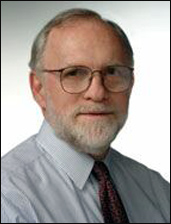William Friedewald
Year: March 21st, 2002
Location: New York City, New York
Interviewed by: Blackburn, Henry
Abstract
Dr. Freidewald joined the PHS and in 1965 went to NIH to work on respiratory virus research. He enjoyed mathematical work more than tissue research, and, encouraged by Jerry Cornfield, took training in biostatistics at Stanford. When he returned to the National Heart Institute, he worked on the Coronary Drug Project and began a series of “firsts” at the Institute: he was the first Head of Consulting on Statistics, first Branch Chief of the new Clinical Trials Branch in 1974, first Head of the Division of Epidemiology and Clinical Applications in the 1980s, and first Associate Director of Disease Prevention.
After his NIH experience he worked at MetLife Insurance for ten years, followed by his current position in epidemiology and biostatistics at Columbia University. While at NIH, despite initial reluctance, Freidewald became involved in the Multiple Risk Factor Intervention Trial (MRFIT), which “changed his life” and established his commitment to prevention. He discusses politics and leadership issues around MRFIT, and the leadership style of Robert Levy at NHLBI. Also mentioned is his work on cancer epidemiology.
The major question facing epidemiology, for Freidewald, is can we influence communities and get them to change? Through his insurance work Freidewald attempted to change physician behavior and thus American health, but considers community health key for prevention. (SF)
Quotes
I guess through all of this, the scientific issue that I find most surprising, but is public health as you’ll quickly see, is the issue of community studies and whether we can impact communities and get them to change. We weren’t successful [in NIH efforts] and the answer was there was this strong trend going on nationwide that was fighting us. But, when I thought about that some more, it meant if the trend was going on, it seems easy to make the community change. So why couldn’t we, with intensive efforts, do even better. I don’t have an answer for that. I don’t know how to get populations to change or why they change.
… I tell [incoming masters’ students] an anecdote of coronary heart disease. I talk about observational epidemiology with the Framingham Study, then the randomized clinical trials, then I show the curve which is this dramatic decline in mortality. I said how intelligent that all was…in the late 40s when Framingham started, to start that at that time was critical and really intelligent. Then based upon that, 20 years later we were then able to start trials and other interventions to see if they worked; we did that piecemeal. The point I make in distinction to cancer is that at no time, at least when I was here, was it ever thought about curing heart disease or coronary heart disease or getting rid of atherosclerosis. Because at that time we thought it was an inexorable process. We were just trying to slow it down a little bit. We made piecemeal decisions and went a step at a time. But those steps were extraordinary when you added them all together and we learned a lot. Whereas, cancer, I think is unfortunately caught with the dream “we’re going to find the magic bullet and cure cancer.”
What struck me and why I remember that is when you [once] said how too much democracy is not the way to run a trial. That’s absolutely right. And this one is trying to be run by that because there is no alternative.
Full Transcript Access
Full transcripts of interviews may be made available to those engaged with original materials for scholarly studies by contacting us.
